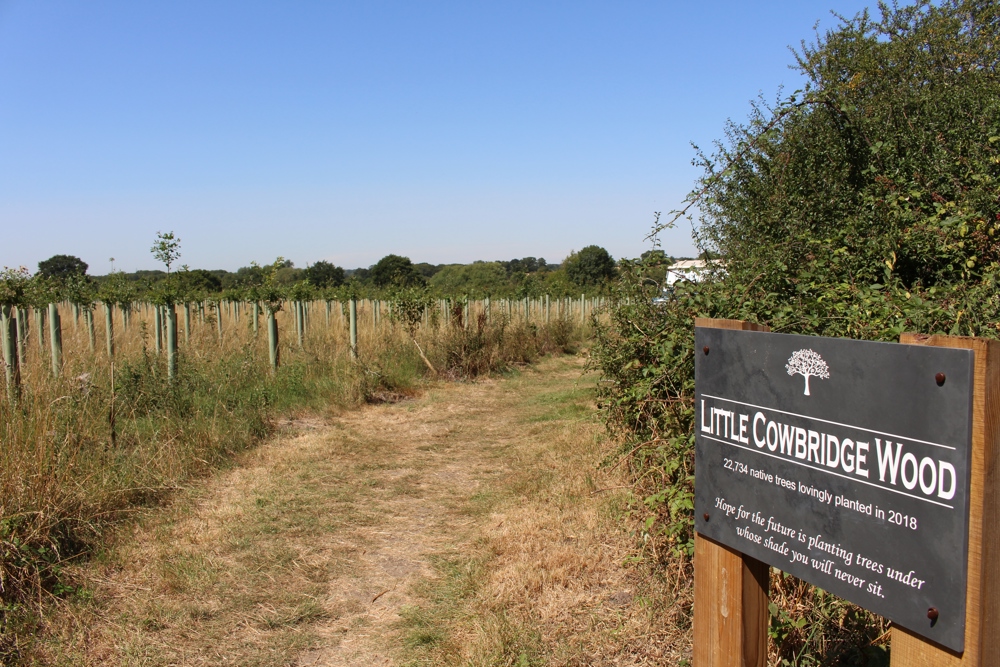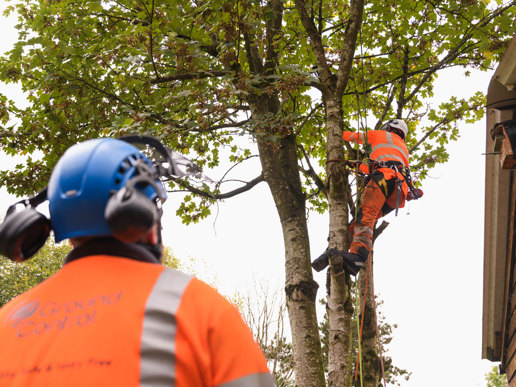Simple changes to enhance biodiversity

There is a growing pressure on businesses to deliver biodiversity net gain and to aid nature's recovery. This pressure can be seen with government legislation and an increasing social rhetoric around the green agenda.
But it can be difficult for businesses, developments, and new schemes to know where to start.
We explore examples of biodiversity net gain advised and actioned by our in-house ecology experts and professional field teams – all working in line with the aims and objectives of clients.
Unleashing the power of deadwood
Deadwood, and importantly standing deadwood, is a valuable habitat for species and wildlife that live nowhere else, and a critical part of the wider ecosystems that they live within.
Where possible, we work with our arboriculturists to create habitat piles and deadwood hibernacula for many species of birds, bats, bugs, and small mammals. During regular tree maintenance and surveys, should a tree require felling, ideally our teams would pollard the tree to create a totem of safe standing deadwood.

This result is the creation of food opportunities, security, and shelter for wildlife, all within a rich deadwood habitat and can be seen on site at Daventry. The development of the site dictated that a number of trees had to be felled for safety reasons. However, we were instead able to create safe standing deadwood and homes for nature.
Installing ‘urban greening items’
Retrofitting biodiversity in developed, inner city or hard landscaped areas can be difficult. However, our specialists can modify the landscapes already in place. An example of this can be seen at an Industrial Estate site near Glasgow city centre, into a beautiful, eco-friendly wildflower meadow.
We introduced wildflower into a hard landscaped area designed to tackle the decline in bees, butterflies and other pollinators in a grey industrial estate.
The importance of native planting
At Green Gains Live we were joined by leading experts who came together to drive the biodiversity agenda and championed UK biodiversity. The consensuses? Rewilding to aid natures recovery is key. Jack Potter, Biodiversity Manager highlighted the importance, commenting:
That means whilst planting is important, planting appropriately is key. Native planting is at the heart of projects such as Little Cowbridge Wood, with 26 species of plants used to ensure the woodland will be resilient to climate change and deliver the multiple benefits it is designed for.

The result is a green asset that already provides a diverse habitat for UK wildlife, but will also capture approximately 3000 tonnes of C02 by year 50.
Multi-use SUDS
With careful considerations for species and the appropriateness for the site, SUDS can have a secondary purpose and create a wetland ecosystem or wildlife pond. This can be seen in action at Cross-A-Moor, in this case a range of carefully selected native hedgerows surround the SUDS that provide homes to hundreds of species of insects, mammals, birds, reptiles and amphibians.
An active wetland also acts as a ‘carbon sinks’ and can reduce the effects of harmful agricultural/industrial runoffs and is an important ecosystem seen in action in our recent Wetlands Excosystms article.
With support from our in-house experts, Ground Control is ideally placed to not just offer ecology surveys and consultation, but to also deliver this with our award-winning services.

Arborists and tree care teams needed in Ireland

An award-winning planting legacy




